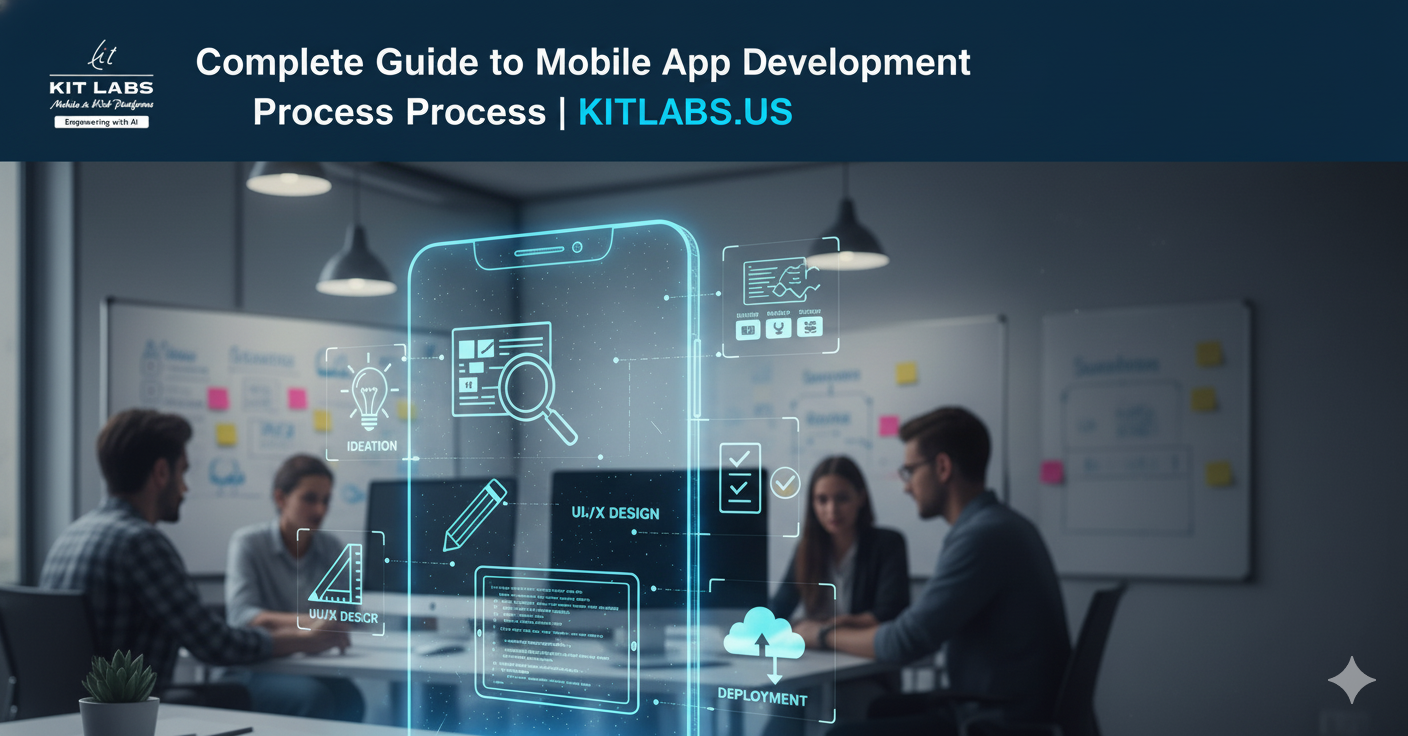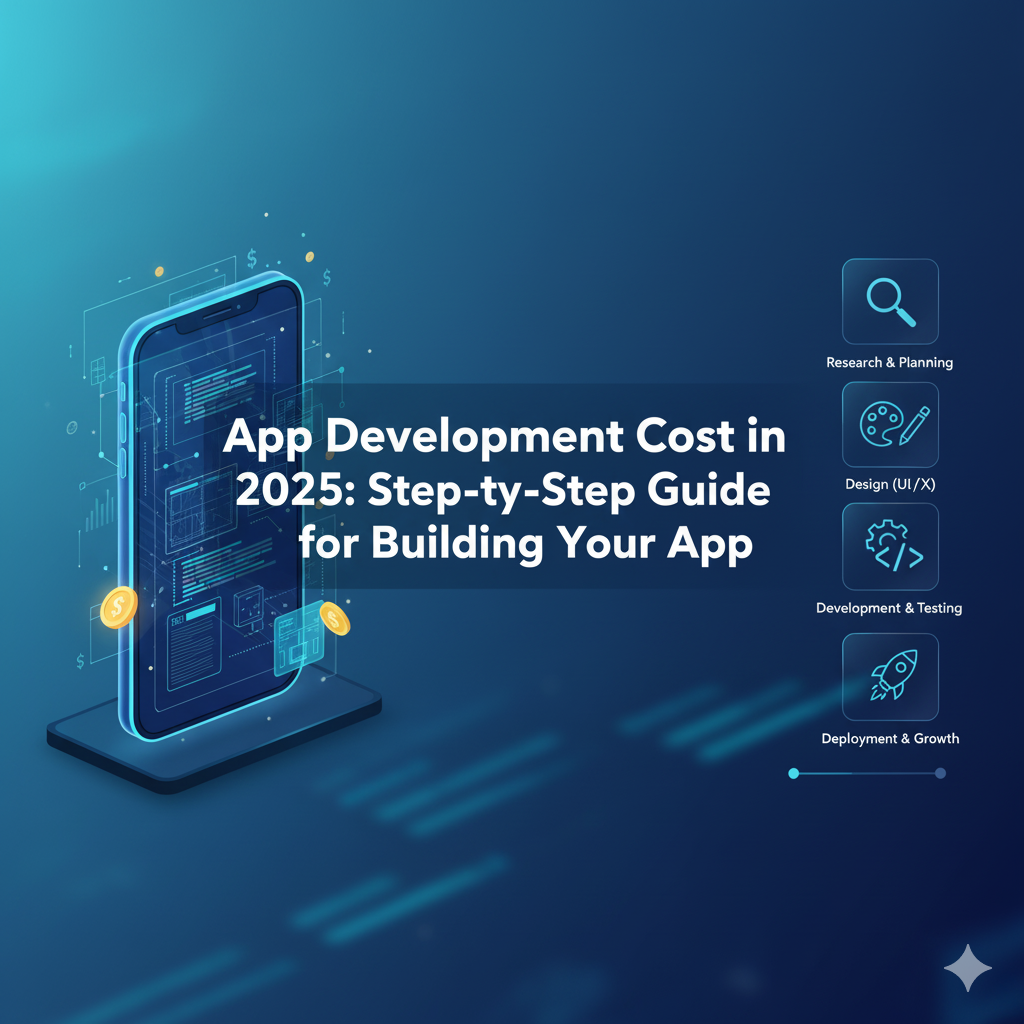A Quick Guide on Mobile App Backend Development
In the digital era, mobile applications have become an essential tool for businesses to engage customers, streamline operations, and deliver value in real-time. While the user interface or frontend often receives the most attention, the true power of any mobile application lies in its backend. A robust and well-designed backend ensures that the app functions seamlessly, scales effectively, and provides a secure environment for data handling. Understanding mobile app backend development is crucial for anyone looking to build a reliable, high-performing application.
This guide offers a comprehensive look at backend development for mobile apps, covering essential concepts like mobile app backend architecture, server management, technology stacks, and the relationship between frontend and backend development. By the end of this article, you will have a clear understanding of how mobile apps function behind the scenes and practical tips for building a backend that supports your app’s success.
Understanding Mobile App Backend Development
The term mobile app backend development refers to the creation and maintenance of the server-side components of a mobile application. The backend is responsible for data storage, processing requests, managing user authentication, and ensuring smooth communication between the app’s frontend and other systems or third-party services.
Unlike the frontend, which users interact with directly, the backend operates invisibly but is critical to the app’s overall functionality, performance, and security. A poorly designed backend can lead to slow response times, app crashes, data breaches, and frustrated users.
A well-planned mobile app backend architecture allows developers to handle increased traffic, integrate additional features, and maintain the app efficiently over time. This is especially important for businesses that expect growth and need a scalable solution.
Why Mobile App Backend Architecture Matters
The mobile app backend architecture is essentially the blueprint of your server-side infrastructure. It defines how the backend components interact with each other, the frontend, and external services. A good architecture ensures:
- Scalability: The app can handle growing user numbers without performance degradation.
- Security: Sensitive data is protected through encryption, authentication, and secure protocols.
- Maintainability: Code is modular and easy to update or expand.
- Performance: Efficient handling of requests ensures a smooth user experience.
Backend architecture is not a one-size-fits-all solution. It depends on factors such as the type of app (social, e-commerce, utility), expected traffic, required integrations, and business goals. Popular architecture styles include monolithic, microservices, and serverless architectures. Each approach has its advantages and trade-offs, making informed decisions critical.
Core Components of Mobile App Backend Development
Every mobile app backend consists of several interconnected components that work together to provide a seamless experience:
- Mobile App Server: The core machine or cloud service where the app’s backend logic runs. It processes client requests, executes operations, and communicates with the database.
- Database: Stores user data, app content, transaction logs, and other information. Common database types include SQL (structured data) and NoSQL (flexible, scalable data).
- API Layer: The bridge between the frontend and backend. APIs handle requests from the app, perform operations on the server, and return the results.
- Authentication & Authorization: Ensures that only legitimate users can access certain features or data.
- Push Notifications & Messaging: Backend systems often handle real-time communication with users through notifications or in-app messages.
- Analytics & Monitoring: Collects data about app usage, performance, and errors for optimization and decision-making.
Proper implementation of these components forms the backbone of a stable, responsive, and secure mobile application.
Backend Development for Mobile Apps vs Frontend Development
Understanding the distinction between frontend and backend development is critical:
- Frontend Development: Focuses on the user interface and experience. It involves designing screens, layouts, buttons, and interactive elements that users directly interact with. Technologies include React Native, Flutter, Swift, and Kotlin.
- Backend Development: Focuses on the server-side logic. It involves database management, server configuration, API development, and security protocols.
While the frontend provides the look and feel, the backend ensures the app functions correctly, scales efficiently, and maintains data integrity. Collaboration between frontend and backend teams is essential for a smooth, integrated development process.
Choosing the Right Mobile App Server
The mobile app server is the foundation of backend operations. Choosing the right server depends on:
- Traffic expectations: High-traffic apps require scalable cloud servers (AWS, Azure, Google Cloud).
- Latency requirements: Real-time apps (chat, gaming) require low-latency servers.
- Cost considerations: Cloud servers can reduce upfront costs but may have variable pricing.
- Integration needs: Apps that rely on third-party services need servers that can easily connect to APIs.
Additionally, modern mobile apps often use cloud-based server solutions, which offer flexibility, automatic scaling, and managed infrastructure, allowing developers to focus on building features rather than managing hardware.
Backend Technology Stack for Mobile Apps
The backend technology stack is a combination of programming languages, frameworks, databases, and tools used to build the server-side components of an app. Some common choices include:
- Programming Languages: Java, Python, Node.js, PHP, Ruby
- Frameworks: Express.js (Node.js), Django (Python), Spring Boot (Java), Laravel (PHP)
- Databases: MySQL, PostgreSQL, MongoDB, Firebase Realtime Database
- Caching Solutions: Redis, Memcached for faster data access
- Cloud Services: AWS, Google Cloud, Microsoft Azure
- API Tools: RESTful APIs, GraphQL for frontend-backend communication
Selecting the right stack depends on the project’s requirements, team expertise, scalability needs, and budget.
Designing Scalable Mobile App Backend Architecture
Scalability ensures the app can handle growth in users and data without compromising performance. Key considerations include:
- Modular Architecture: Separates features into independent modules for easier updates and maintenance.
- Load Balancing: Distributes incoming requests across multiple servers to prevent overload.
- Caching: Reduces database load by storing frequently accessed data temporarily.
- Database Optimization: Indexing, query optimization, and choosing the right database type (SQL vs NoSQL).
- Cloud Infrastructure: Auto-scaling servers adapt to demand spikes.
A well-planned backend architecture not only improves performance but also simplifies future expansions and integrations.
API Design and Management
APIs are the communication bridge between the frontend and backend:
- RESTful APIs: Widely used for mobile apps; simple, flexible, and stateless.
- GraphQL: Allows clients to request only the data they need; efficient for complex queries.
- Versioning: Maintain backward compatibility as your API evolves.
- Security: Implement authentication tokens, encryption, and rate limiting to protect APIs.
Effective API design improves app performance, security, and developer productivity.
Security Considerations in Backend Development
A secure backend is crucial for protecting user data and maintaining trust:
- Authentication & Authorization: Implement OAuth, JWT, or multi-factor authentication.
- Data Encryption: Use SSL/TLS for data in transit and encryption for data at rest.
- Regular Security Audits: Monitor for vulnerabilities and patch issues promptly.
- Compliance: Adhere to GDPR, HIPAA, or industry-specific regulations.
Security should be integrated throughout the mobile app backend development lifecycle, not just at deployment.
Performance Optimization for Mobile App Backends
Backend performance directly impacts the user experience:
- Optimize database queries for faster response times.
- Use caching for frequently accessed data.
- Implement asynchronous processing for heavy tasks.
- Monitor server load and performance metrics continuously.
- Minimize API response times by optimizing endpoints.
Efficient backend performance improves app responsiveness, reduces user frustration, and enhances retention.
Integration with Third-Party Services
Many apps rely on external services to extend functionality:
- Payment gateways for e-commerce apps (Stripe, PayPal).
- Push notification services (Firebase Cloud Messaging, OneSignal).
- Analytics tools (Google Analytics, Mixpanel).
- Social media integrations (Facebook, Twitter, LinkedIn).
Proper backend design ensures these integrations are secure, reliable, and scalable.
Monitoring, Logging, and Maintenance
Continuous monitoring is essential for maintaining backend health:
- Logging: Capture errors and user activity to troubleshoot issues.
- Monitoring: Track server uptime, response times, and API usage.
- Maintenance: Regular updates, bug fixes, and infrastructure improvements.
This ensures smooth operation and quick resolution of potential issues before they impact users.
Collaboration Between Frontend and Backend Teams
For a successful mobile app, frontend and backend teams must work closely:
- Clear API Contracts: Define endpoints, data formats, and expected responses.
- Regular Communication: Coordinate changes to features, design, and performance improvements.
- Shared Tools: Use version control (Git), project management tools, and CI/CD pipelines.
Strong collaboration minimizes delays, errors, and inconsistencies between frontend and backend.
KITLABS Expertise in Mobile App Backend Development
At KITLABS, we specialize in building robust and scalable backends for mobile applications. Our team combines deep technical expertise with strategic planning to design backend architecture that supports seamless frontend integration, ensures security, and enables growth. We guide businesses through backend development for mobile apps using the latest backend technology stacks, cloud services, and best practices to deliver high-performing apps.
Conclusion
The backend is the powerhouse of any mobile application. From mobile app backend architecture and server management to APIs, security, and performance optimization, every aspect of mobile app backend development is critical to the app’s success. A well-designed backend ensures your app is fast, reliable, secure, and scalable, providing a seamless experience for users.
Understanding the differences between frontend vs backend development, choosing the right backend technology stack, and implementing best practices in server design and API management are crucial steps for developers and businesses alike.
Partnering with experienced teams like KITLABS ensures your mobile app backend is built with efficiency, reliability, and growth in mind—enabling your app to succeed in today’s competitive digital landscape.





